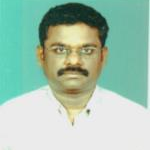International Journal of Image, Graphics and Signal Processing (IJIGSP)
IJIGSP Vol. 6, No. 4, 8 Mar. 2014
Cover page and Table of Contents: PDF (size: 533KB)
A new Decision Based Median Filter using Cloud Model for the removal of high density Salt and Pepper noise in digital color images
Full Text (PDF, 533KB), PP.46-53
Views: 0 Downloads: 0
Author(s)
Index Terms
Image Processing, Salt, Pepper noise, Cloud Model, Decision based Median Filter
Abstract
Removing the noise from digital color images plays a vital role in many of the image processing applications. Salt and Pepper noise is one type of the impulse noise which corrupts images during image capture or transmission or storage etc. This paper proposes and implements a new decision based median filter using cloud model to restore the highly corrupted digital color images. The proposed filter is tested on different images and shows better performance than standard median filter, adaptive median filter, decision based median filter and modified decision based median filter in terms of root mean square error, peak signal to noise ratio and image quality index.
Cite This Paper
K. Kannan,"A new Decision Based Median Filter using Cloud Model for the removal of high density Salt and Pepper noise in digital color images", IJIGSP, vol.6, no.4, pp.46-53, 2014. DOI: 10.5815/ijigsp.2014.04.06
Reference
[1]Kundu, S. K. Mitra, and P. P. Vaidyanathan. Application of two dimensional generalized mean filtering for removal of impulse noises from images. IEEE Trans, 1984, ASSP-32(3): 600-609.
[2]Thomas S. Huang, George J. Yang and Gregory Y. Tang. A Fast Two-Dimensional Median Filtering Algorithm. IEEE Trans, 1979, ASSP-27(1):13-18.
[3]L. Yin, R. Yang, M. Gabbouj, and Y. Neuvo. Weighted median filters: A tutorial. IEEE Trans, 1996, Circuits and Systems II, Analog and Digital Signal Processing, 43(3): 157–192.
[4]D. Brownrigg. The weighted median filter. Commun. Assoc. Comput., 1984, 27(8): 807–818.
[5]S. J. Ko and S. J. Lee. Center weighted median filters and their applications to image enhancement. IEEE Trans, 1991, Circuits and Systems, 38(9): 984 –993.
[6]H. Hwang and R. A. Haddad. Adaptive median filters: New algorithms and results. IEEE Trans, 1995, Image Processing, 4(4): 499–502.
[7]Z. Wang and D. Zhang. Progressive switching median filter for the removal of impulse noise from highly corrupted images. IEEE Trans, 1999, Circuits and Systems II, Analog Digital Signal Processing, 46(1): 78–80.
[8]K. S. Srinivasan and D. Ebenezer. A new fast and efficient decision based algorithm for removal of high-density impulse noises. IEEE Signal Processing Letter, 2007, 14(3): 189–192.
[9]Madhu S. Nair, K. Revathy and Rao Tatavarti. Removal of Salt-and Pepper Noise in Images: A New Decision-Based Algorithm. Proc. of International Multi Conference of Engineers and Computer Scientists, IMECS 2008: 19-21.
[10]Zhe Zhou. Cognition and Removal of Impulse Noise with Uncertainty. IEEE Trans, 2012, Image Processing, 21(7): 3157-3167.
[11]Deyi Li, Changyu Liu and Wenyan Gan. A New Cognitive Model: Cloud Model. International Journal of Intelligent Systems, 2009, 24: 357-375.
[12]H. J. Wang and Y. Deng. Spatial clustering method based on cloud model. Proc. of IEEE International Conference on Fuzzy Systems and Knowledge Discovery, 2007, 2: 272–276.
[13]Y.L. Qi. Classification for trademark image based on normal cloud model. Proc. of IEEE International Conference on Information Management, Innovation Management and Industrial Engineering, 2009, 3: 74-77.
[14]H. Chen and B. Li. Qualitative rules mining and reasoning based on cloud model. Proc. of IEEE International Conference on Software Engineering and Data Mining, 2010, 523–526.
[15]K. Qin, K. Xu, Y. Du, and D. Y. Li. An image segmentation approach based on histogram analysis utilizing cloud model. Proc. of IEEE International Conference on Fuzzy Systems and Knowledge Discovery, 2010, 2: 524–528.
[16]Y. Q. Shi and X. C. Yu. Image segmentation algorithm based on cloud model the application of fMRI. Proc. of IEEE International Conference on Intelligent Computation Technology and Automation, 2008, 2: 136–140.
[17]Y. Gao. An optimization algorithm based on cloud model. Proc. of IEEE International Conference on Computational Intelligence and Security, 2009, 2: 84–87.
[18]Zhou Wang and Alan C. Bovik. A Universal Image Quality Index. IEEE Signal Processing Letters, 2002, 9(3): 81-84.
